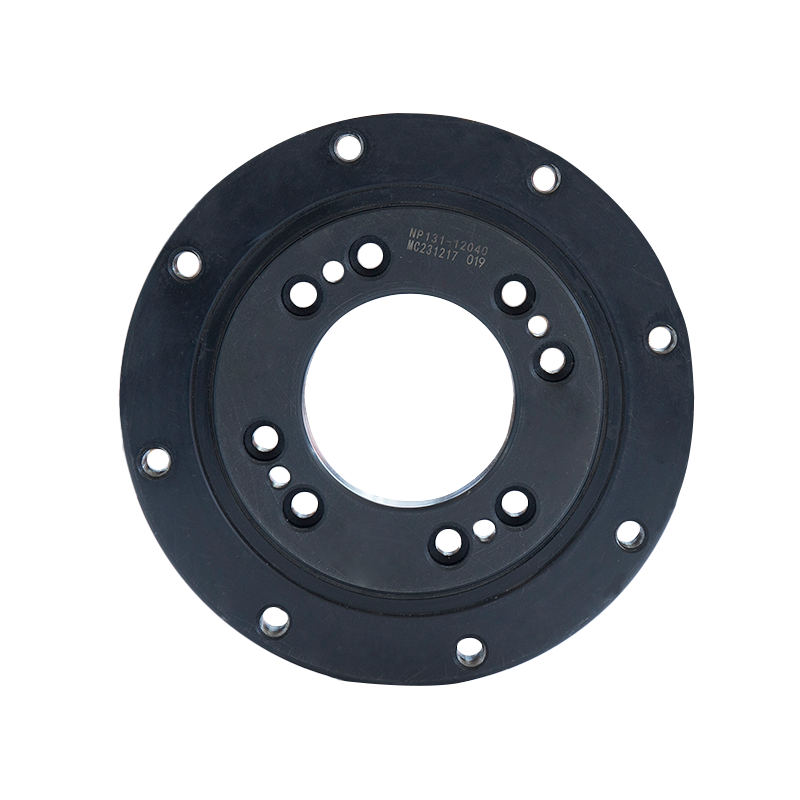How do integrated sensor technologies in slewing ring bearings enable predictive maintenance and reduce downtime?
 2024.11.27
2024.11.27
 Industry news
Industry news
Integrated sensor technologies in slewing ring bearings enable predictive maintenance and reduce downtime by providing real-time data on the bearing’s condition, load, and performance. This information allows operators to address potential issues before they escalate into failures, improving reliability and extending the lifespan of the equipment. Here’s how these systems work and their impact:
How Sensor Technologies Work in Slewing Ring Bearings
Embedded Sensors:Sensors are integrated directly into the bearing structure, such as in raceways or near rolling elements, to continuously monitor critical parameters.
Key Parameters Monitored:
Vibration Levels: High vibrations can indicate misalignment, wear, or damage to the rolling elements or raceways.
Temperature: Elevated temperatures suggest issues like insufficient lubrication, excessive friction, or overheating of components.
Load and Stress: Strain gauges measure axial, radial, and moment loads, ensuring the bearing is operating within safe limits.
Lubrication Condition: Sensors detect lubricant degradation or contamination, signaling the need for reapplication or replacement.
Rotation Speed and Angle: Position sensors track rotation and angular displacement, useful for precise applications like robotics or cranes.
Data Communication:The sensors transmit data wirelessly or through wired connections to a centralized monitoring system or cloud platform, enabling remote access to performance metrics.
Data Analysis and Alerts:Advanced algorithms analyze the collected data to identify trends, deviations, or signs of potential failure. Alerts are generated if thresholds are exceeded, prompting preventive action.

Benefits of Predictive Maintenance
Early Fault Detection:By identifying wear, misalignment, or lubrication issues early, operators can schedule repairs or maintenance before catastrophic failure occurs.
Reduced Downtime:Unplanned downtime is minimized, as maintenance can be performed proactively and during planned intervals.
Cost Savings:Avoiding major failures reduces the cost of repairs and replacements. Optimized maintenance schedules also lower operational expenses.
Extended Lifespan:Monitoring load and lubrication ensures the bearing operates under optimal conditions, prolonging its service life.
Enhanced Safety:Real-time monitoring prevents sudden bearing failures that could lead to accidents, especially in heavy machinery like cranes or wind turbines.
Applications of Sensor-Integrated Slewing Ring Bearings
Construction Equipment:Excavators, cranes, and loaders benefit from load and vibration monitoring to ensure stable and efficient operation.
Wind Turbines:Sensors track bearing condition in real-time to prevent costly failures in remote or offshore locations.
Robotics and Automation:Precision bearings in robotics use position and load sensors for exact movement control and reliability in high-speed operations.
Medical Devices:CT scanners and other equipment rely on temperature and vibration monitoring for consistent and accurate rotation.
Heavy Industry:Bearings in mining and steel mills monitor stress and lubrication under extreme conditions to maximize productivity.
Challenges and Future Directions
Integration Complexity:Embedding sensors without affecting the bearing’s mechanical properties requires advanced engineering and design.
Cost:High initial costs may deter adoption, though savings from reduced downtime and repairs often justify the investment.
Data Management:Large volumes of data require efficient storage, processing, and interpretation to deliver actionable insights.
Future Innovations:Improved miniaturization of sensors and energy-efficient communication technologies will enhance integration and performance.
AI-driven analytics could provide even more accurate predictions and automated responses to anomalies.












